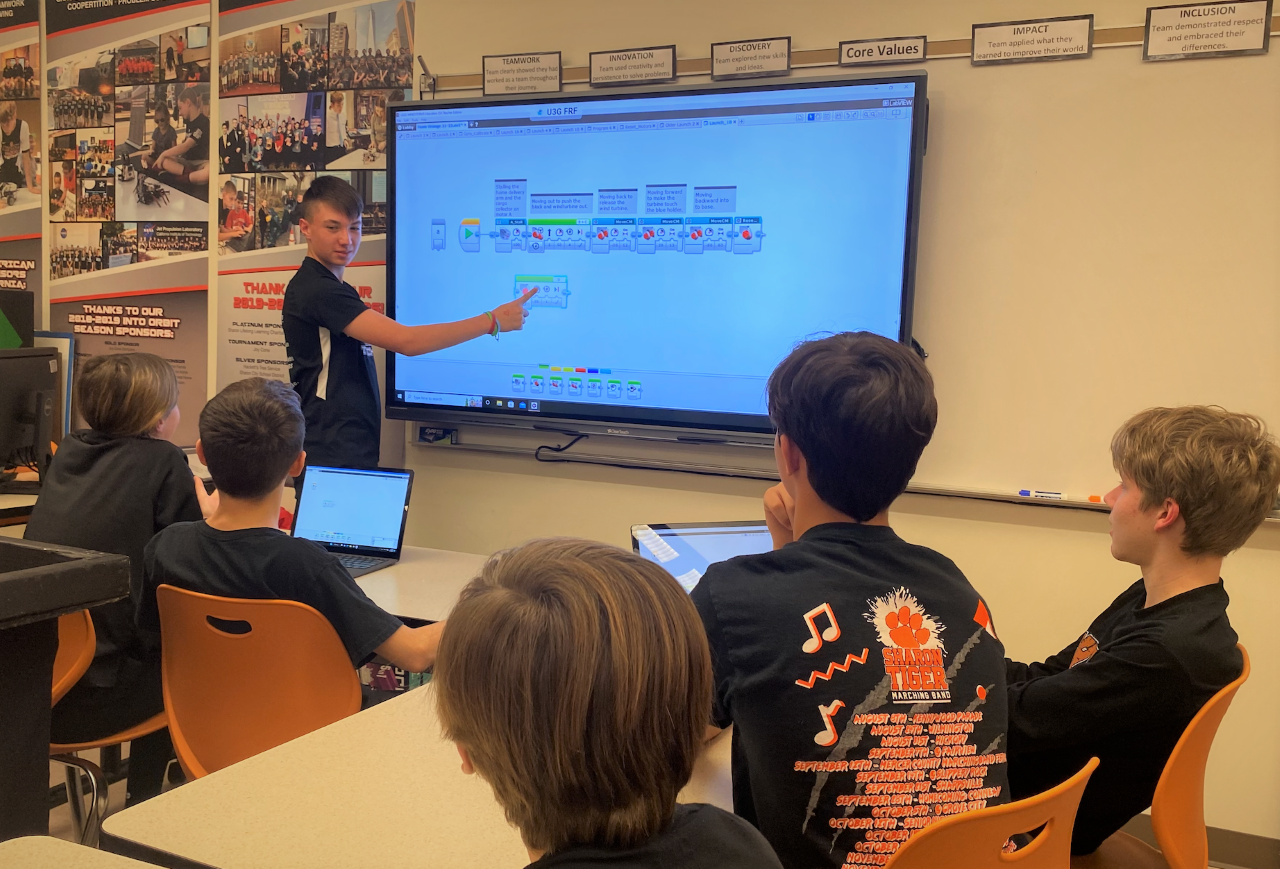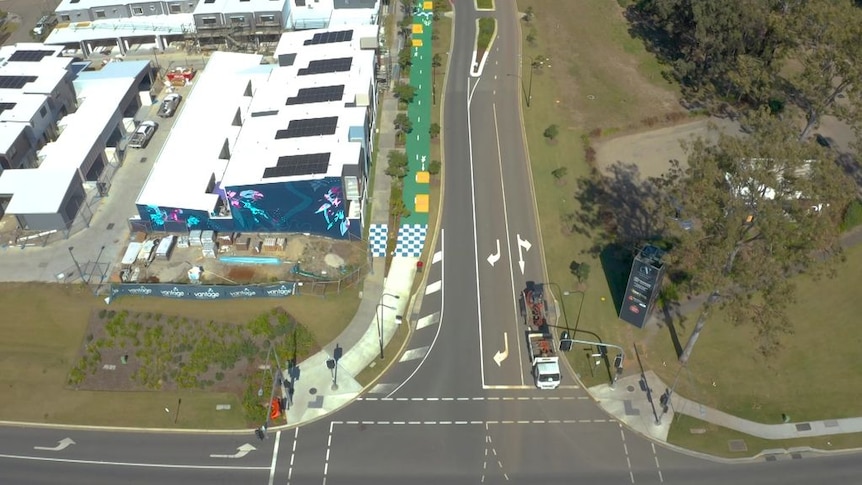
Table of Contents
Like many first house consumers, Georgia’s precedence was value and placement — it is solely incidental her new house is souped-up with expertise that is but to hit the market and improvements that may save her hundreds.
Key factors:
- Georgia’s house in Brisbane’s Carseldine got here with all of the mod cons for $530,000
- She is estimated to avoid wasting not less than $1,600 on energy payments a yr
- The house is “off the grid” most days and is being studied for its futuristic inexperienced credentials
The 25-year-old is the second particular person to transfer into Carseldine Village in Brisbane’s north, together with her house so superior it’s being studied as a “residing laboratory”.
Building remains to be underway for the majority of the 182-home improvement, however it’s going to quickly change into the nation’s first freehold neighbourhood that will likely be 100 per cent photo voltaic and battery operated.
Whereas that in itself is novel, Georgia’s house is among the smartest within the nation.
Her house is on the slicing fringe of pre-cooling expertise, which can slash carbon emission and power prices, whereas lessening the load on the grid for the night peak.
The air-conditioner within the house can discuss to the electrical energy grid and will likely be geared as much as permit automated pre-cooling — but to be seen in Australia.
Even Georgia’s showering habits are memorised by the house’s app, in order that in winter or when there is not a lot photo voltaic, her battery is charged on the lowest value.
It’s estimated that Georgia’s house can have net-zero power emissions and she or he’ll save not less than $1,600 a yr on electrical energy.

Since shifting in in Might, Georgia mentioned she has discovered herself hooked on monitoring her photo voltaic by means of her cell phone app.
An influence invoice hasn’t are available but, however she believes will probably be $100 for the quarter and that’s only for the “every day utilization cost” for being linked to the grid.
“I work in infrastructure and we do a variety of work on net-zero developments,” she mentioned.
“It is fairly cool to have the ability to say to my colleagues ‘my home is off the grid’.
“We did not should do something. It was all included as a part of the construct bundle.”
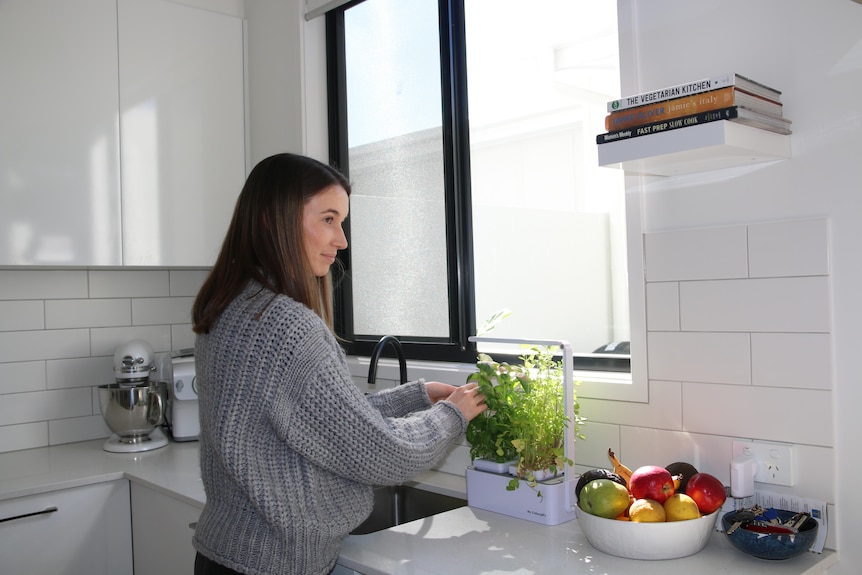
Residing laboratory
Georgia and 24 different house house owners within the improvement are a part of a separate pilot program to see if they might save much more power and cash through the use of a Residence Power Administration System.
The system, developed by the CSIRO, is cloud based mostly and may talk with Georgia’s photo voltaic, battery, air-con and the facility grid.
It means she will be able to automate her power provide and output by means of her cell phone, to benefit from daytime photo voltaic and reap the benefits of cheaper electrical energy tariffs.
As well as, the electrical energy generator can talk together with her home equipment to pre-cool her house or flip off her air-conditioner if there’s a danger of a blackout.
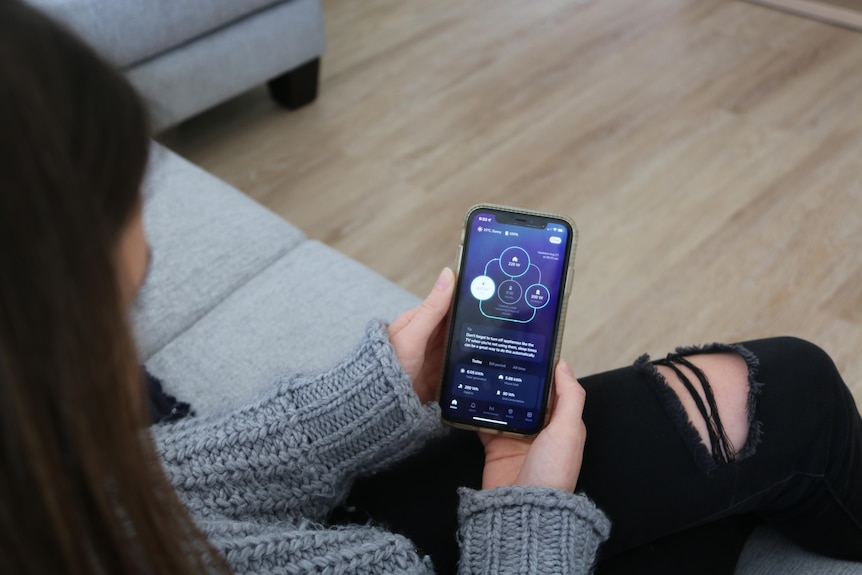
Proving mass ‘web zero’ residing is feasible
Georgia purchased the two-storey terrace, on a 167m2 block, as a result of at $530,000 it was between $70,000 and $120,000 cheaper than comparable properties she was taking a look at.
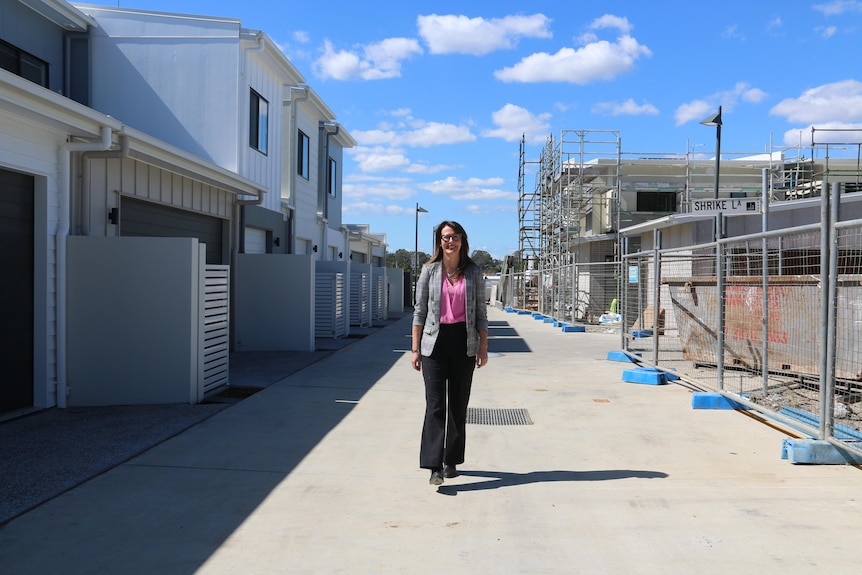
The Village is the brainchild of state authorities’s Financial Improvement Queensland (EDQ), who got down to show that net-zero power emission residing was not solely achievable, however inexpensive to everybody, together with first house consumers.
EDQ mission supervisor Brooke Walters mentioned house owners may save $1,600 a yr on energy payments, however that determine was calculated earlier than energy costs rose and does not take into consideration the software program platform.
Ms Walters mentioned they estimated the platform may save the house proprietor an extra 27 per cent, however that determine would wish to be substantiated by means of a long-term examine.
“It is not simply photo voltaic and battery, however by having the freehold titled properties and no physique company, we estimated that over the following 10 years, individuals ought to save about $30,000,” she mentioned.
“This can be a demonstration that it may be carried out. That is the longer term. Every house saves about 5 tonnes of carbon emissions per yr.”
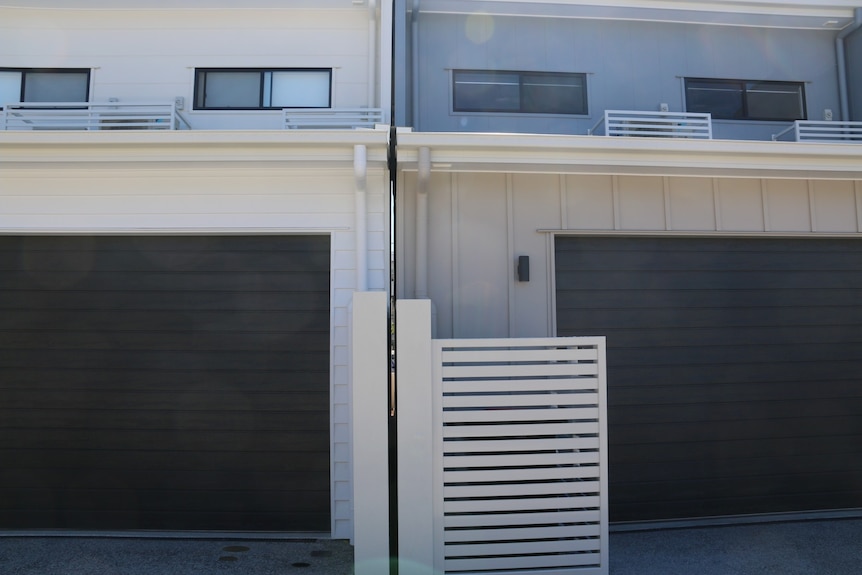
Air-conditioning of the longer term
The 25 properties that use the software program platform even have an air-conditioner that’s but to hit the market.
The air conditioner has a prototype cloud-based controller system, flown in from Japan, that may talk with the system’s cloud and Energex.
The elements have solely been utilized in business air-con and is a world first to be used in properties.
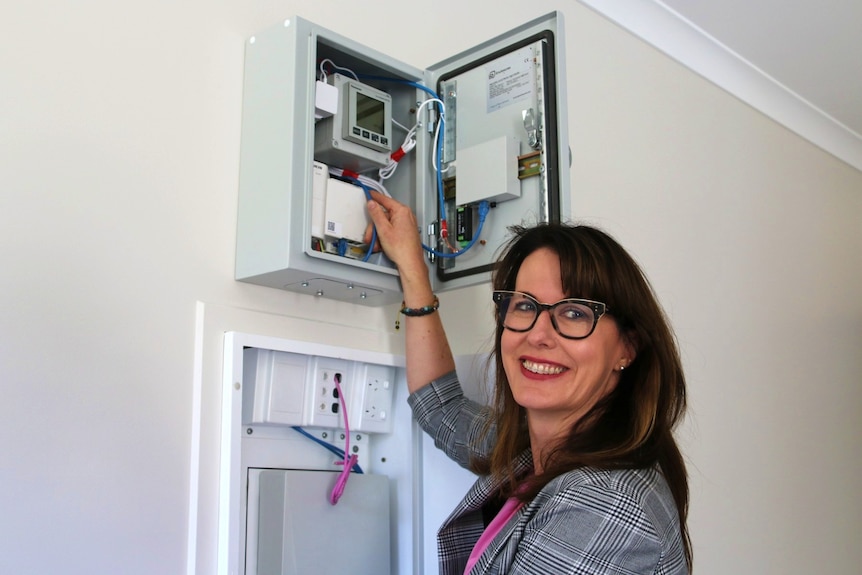
The system can predict the exterior climate, is aware of the inner temperature and the obtainable photo voltaic and battery power. From this set of knowledge, it may be automated to pre-cool properties earlier within the day when photo voltaic power is in abundance,
This reduces prices for the householder and demand on the electrical energy grid through the afternoon and night peaks.
“Being a prototype, the options and specs of the present {hardware} requires additional refinement to make it price efficient and embody it within the outside unit and that may take time to develop,” Ms Walters mentioned.
“That is pure analysis and improvement.

“However that is the way forward for air-conditioning. I do not know what number of years will probably be, possibly it’s going to 5 years.”
Analysis into brown outs
The expertise permits the power community to ship indicators by way of the web to show down the air-conditioners if there’s an power disaster.
Throughout the examine, totally different situations will likely be trialled during which a sign will likely be despatched to the cloud requiring the properties to export power from their photo voltaic battery. The power firm can then perceive the demand placed on the grid and make higher selections to make sure a dependable and cost-effective provide of energy.
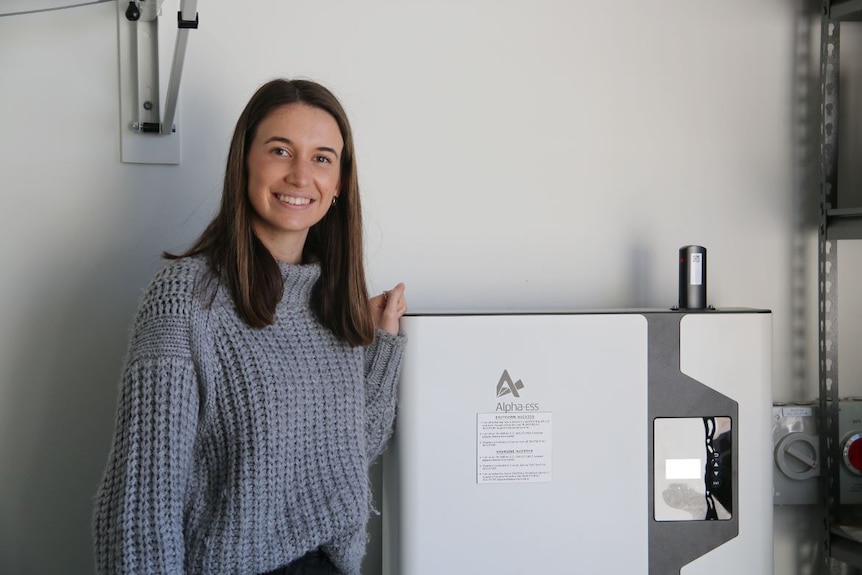
“It is like an influence station happening, or a substation happening, being able to reply with emergency era from individuals’s properties,” Ms Walters mentioned.
“That is the longer term, the place you possibly can draw on a number of sources or storage and era, with homeowners rewarded financially.
“It may keep away from brown outs or potential blackouts.”
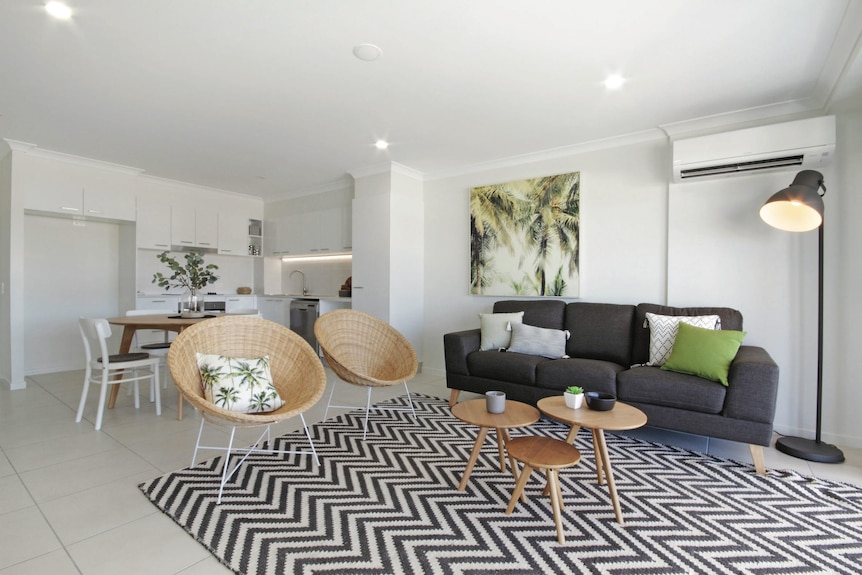
Queensland College of Know-how affiliate professor Wendy Miller will oversee the examine for the following two years.
She needs to find out the distinction between having environment friendly home equipment, photo voltaic and battery, in addition to how a lot power is saved by means of using a house administration system.
QUT will measure how a lot photo voltaic Georgia and the opposite contributors generate, how a lot power they use for the recent water system, air-con and the way a lot their battery will get charged and discharged.
“This has by no means been carried out earlier than,” she mentioned.
“If at a family stage, we will attempt to maximise households to have simply sufficient photo voltaic to fulfill all of their load, even through the daytime, it saves an over provide of photo voltaic in the course of the day.”

Vantage Houses is certainly one of two corporations engaged on the mission.
Basic supervisor Matthew Burness mentioned the house’s added insulation and power environment friendly glazing has meant they outperform the 7-star house power ranking.
“The homes are inexpensive, that is additionally as a result of small lot terraced housing, and prior planning and implementation of 100 per cent photo voltaic,” he mentioned.
“So that you get some economic system of scale and good provide pricing, after which additionally placing in provisions just like the EV charger which is not an enormous price when it is carried out on the development section.
“They’re attempting to push the boundaries on what’s the normal sooner or later.”




